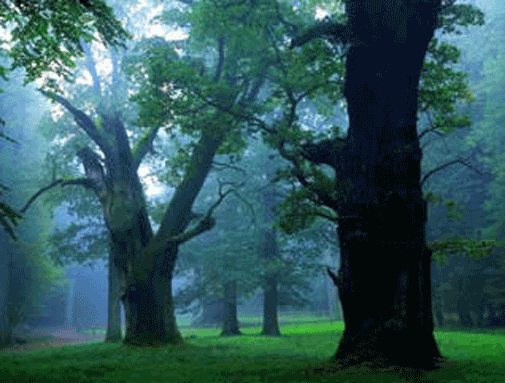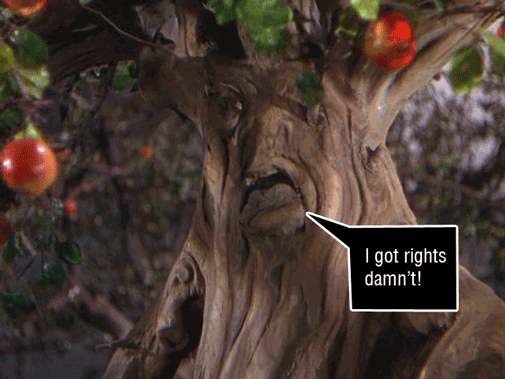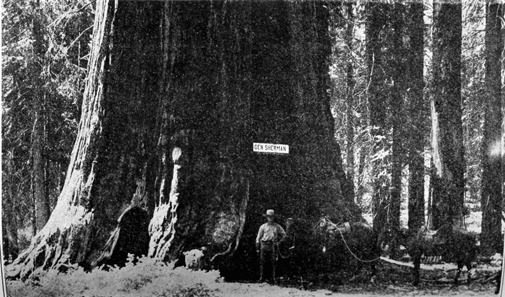 {The Oak Trees of Ivenack: As legend goes a group of nuns were turned into the Oaks for breaking their vow of faith: Source}
{The Oak Trees of Ivenack: As legend goes a group of nuns were turned into the Oaks for breaking their vow of faith: Source}
The U.S. in comparison to many parts of the world has an inverted placement of importance of environmental conflictions. Treehugger pointed us to the story about the good folks of Florida who feel that a well placed billboard serves the common good more effectively then a tree or healthy ecosystem. One Osceola, Florida legislator said "Those billboards are important, they feed lots of families. This is a tourism corridor. tourism depends on billboards, not on trees."
In contrast Ecuador’s recently new constitution grants rights to nature. One passage says nature “has the right to exist, persist, maintain and regenerate its vital cycles, structure, functions and its processes in evolution.”
For many years Europeans have regarded some of their oldest living trees as great icons of cultural heritage. Aloys Bernatzky, a contemporary author, writes: "From the tree, we learn to see our lives as part of growth and decaying. It is an image and symbol of peace on earth."
Today many European countries are taking part in a movement to recognize and honor the ecological value of big trees as the oldest living beings in the natural landscape. A widespread belief is that "The conservation and protection of ancient trees is the biggest obligation to European biodiversity".

Many trees have lived through several generations and are ingrained in ancient folklore and personification. The oak trees of Ivenack, for example, are a remnant of an ancient type of grazed forest with an open park like character that became a hunting estate in the 18th century. The trees are famous in Germany - not only for their exceptional age and size - but also for the legends and myths which describe their history: "Long ago, there was in Ivenack a Cistercian Nunnery. Seven nuns were said to have broken their vow of faith and as punishment they were transformed into oaks. Not until 1000 years have passed will the first of the nuns be released and then the oak tree will die. A hundred years later, the second nun will be released and this will continue each century until all of the nuns have been released."
In the Florida case of commerce vs. nature, commerce decidedly won. But why does it have to be one or the other? If Americans were to adopt the Ecuadorian principle of rights for nature, would the adherence to these rights allow trees and related environmental amenities to become personified? So rather then cutting down the nameless, faceless Oak so that “Ralph’s Mattress Mart’s” billboard can be easily viewed, you’d be cutting down “Ol’ Rosco”, who has stood long before “Ralph” even got into the mattress biz. Also, is billboard design incapable of innovation so that both can contribute to communal prosperity? I suppose its human nature, when conflict arises the immediate solution we come to is the eradication of one of the conflictors.
To be honest I am on the fence regarding the rights for nature issue. On one hand I see countless litigation problems that could potentially clog up our judicial system while determining whether “all trees are created equal”. On the other though, adhering to certain natural rights could lead us to unprecedented innovations in Landscape Architecture. Designers would no longer have to scrape and scrounge in order to protect existing planting from development and use the new found freedom to create immediate experiences in relatively unaltered environments.
 {The Giant Sequoia known as General Sherman, one of the tallest trees in the world at 275 ft.: Source}
{The Giant Sequoia known as General Sherman, one of the tallest trees in the world at 275 ft.: Source}
